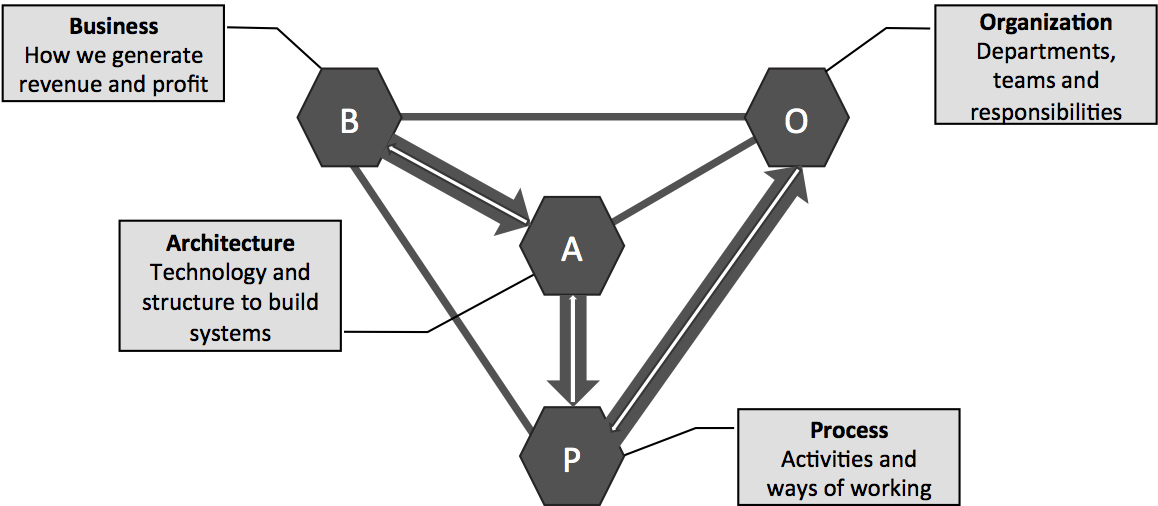
Again and again, I run into situations in which change agents in organizations that I work with run into organizational boundaries that stop them from moving forward in a way that makes perfect sense from a business and innovation perspective. For various reasons, within the current organization, agreements have been reached where some functions have responsibilities that others can not intrude upon without causing major hassle and disturbance in the company. The result is a situation where the current organization dictates what the company looks like going forward, no matter if this is the right setup or not.
So, even though I am risking sounding like a broken record to those that have me seen present or have read some of my work, I am afraid that I need to once again present the BAPO model. In my experience, BAPO offers one of the few antidotes towards the current organizational setup dictating the future of the company.
The BAPO model has a very simple premise: the starting point for any organization is the business strategy and the innovations that define the future of the company. The way we generate revenue and how we generate value for our customers needs to be the starting point for any subsequent activities or decisions. So, the BAPO model defines the “B” as the starting point.
Based on the “B”, the next step is to define the architecture and technology choices. This refers to as the “A”, which is in turn provides the starting point for the process, ways of working and tools, i.e. the “P” of the model. Finally, and only based on the B, A and P, should the organization (“O”) be defined.

Figure: The BAPO Model
The interesting situation is that most companies are not BAPO but instead they are OPAB: the existing organization is used as a basis for the definition of convenience-driven processes, which in turn leads to an accidental architecture. This restrictive architecture, driven by the past of the company, rather than its future, then offers a highly limited set of business strategy options.
In company after company, whenever I present the BAPO model, the first reaction is: Yes, of course! And then, after a few seconds, some or several people in the audience realize that this is exactly the opposite of how their company really works. And the realization (and associated embarrassment) that the company actually uses OPAB sets in. The result often is a lively discussion across the participants on the times the company has falling into the trap in the past and whether we are at risk of falling into this trap again right now.
My call to action: be vigilant against cases of OPAB in your company and bring up the BAPO model whenever the organization is at risk. Ensure to first discuss the business strategy and value to customers that we’re looking to accomplish and only then allow for the discussion to turn to what this means internally in the organization. Start from the B; not the O!
Follow me on janbosch.com/blog, LinkedIn (linkedin.com/in/janbosch) or Twitter (@JanBosch)! And you might like www.software-center.se!
One thought on “Structure Eats Strategy”
Comments are closed.